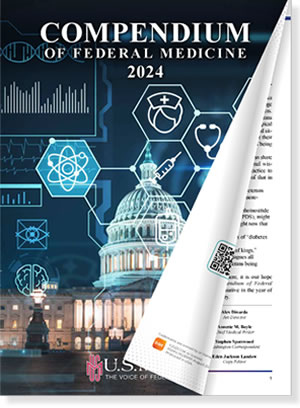BEDFORD, MA—Using multiple sources to get prescribed pain medications and other Schedule II through V drugs increases risks for veterans, a new study finds.
A report in the American Journal of Managed Care discussed the results of a study to evaluate whether veterans in Massachusetts receiving opioids and/or benzodiazepines from both VHA and non-VHA pharmacies are at higher risk of adverse events compared with those receiving opioids at VHA pharmacies only.1
Researchers from the Center for Healthcare Organization and Implementation Research at the Bedford VA Medical Center focused on a cohort of veterans who filled a prescription for any Schedule II through V substance at a Massachusetts VHA pharmacy. Prescriptions were recorded in the Massachusetts Department of Public Health Chapter 55 data set.
Included in the study sample were 16,866 veterans residing in Massachusetts, of whom 9,238 (54.8%) received controlled substances from VHA pharmacies only and 7,628 (45.2%) had filled prescriptions at both VHA and non-VHA pharmacies—designed as “dual care users”—between Oct. 1, 2013, and Dec. 31, 2015. Defined as the primary outcomes were nonfatal opioid overdose, fatal opioid overdose and all-cause mortality.
The groups had some differences, researchers pointed out. Compared with VHA-only users, more dual care users:
- Resided in rural areas (12.6% vs. 10.6%),
- Received high-dose opioid therapy (26.3% vs. 7.3%),
- Had concurrent prescriptions of opioids and benzodiazepines (34.8% vs. 8.2%), and
- Had opioid use disorder (6.8% vs. 1.6%).
Results based on adjusted models indicated that dual care users had higher odds of nonfatal opioid overdose (odds ratio [OR], 1.29; 95% CI, 0.98-1.71) and all-cause mortality (OR, 1.66; 95% CI, 1.43-1.93) compared with VHA-only users. The study team noted that dual care use was not associated with fatal opioid overdoses, however.
“Among veterans in Massachusetts, receipt of opioids from multiple sources was associated with worse outcomes, specifically nonfatal opioid overdose and mortality,” study authors concluded. “Better information sharing between VHA and non-VHA pharmacies and prescribers has the potential to improve patient safety.”
Jasuja GK, Ameli O, Miller DR, Land T, Bernson D, Rose AJ, Berlowitz DR, Smelson DA. Overdose risk for veterans receiving opioids from multiple sources. Am J Manag Care. 2018 Nov;24(11):536-540. PubMed PMID: 30452210.

